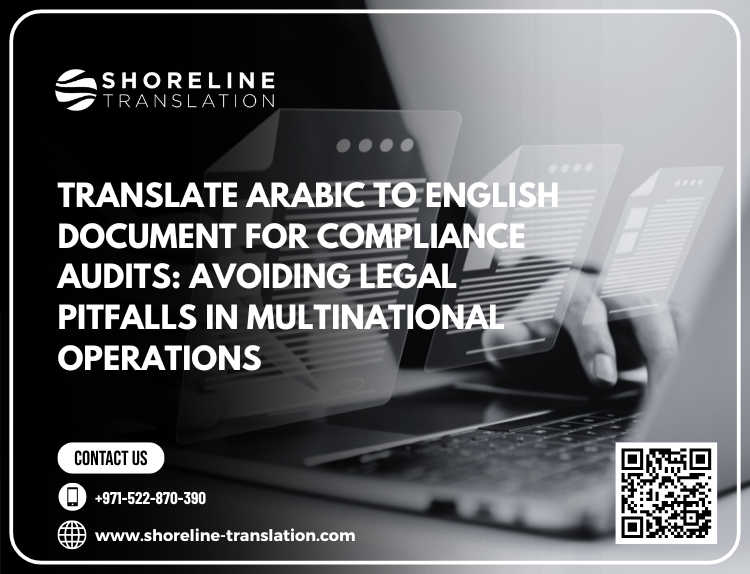Table of Contents
ToggleKey Challenges in English to Arabic Translation and How to Overcome Them
Welcome to our blog post on the fascinating world of English to Arabic translation! As language enthusiasts, we understand that bridging the gap between these two distinct languages can be a daunting task. Whether it’s capturing cultural nuances or finding equivalent expressions, numerous challenges pave the way for translators in this domain. But fear not! In this article, we will explore some of the key hurdles faced by translators and share practical tips and strategies to overcome them. So grab your translation toolkit and get ready to unravel the secrets behind effective English to Arabic translation!

Introduction to English to Arabic Translation
When it comes to translation, there are always going to be challenges that need to be overcome. This is especially true when translating from English to Arabic. Several key challenges need to be considered when performing this type of translation.
The first challenge is the fact that Arabic is a very different language from English in terms of grammar and syntax. This can make it difficult to accurately translate the meaning of a sentence from one language to the other. It is important to have a good understanding of both languages to overcome this challenge.
Another challenge that can be faced when translating from English to Arabic is the fact that there are many different dialects of Arabic. This can make it difficult to ensure that the translation is accurate for all readers. It is important to work with a translator who is familiar with the different dialects to avoid any misunderstandings.
Another key challenge that needs to be considered when translating from English to Arabic is the fact that Arabic uses a completely different alphabet than English. This can make it difficult for people who are not familiar with the alphabet to understand what is being written. It is important to work with a translator who is familiar with both alphabets to avoid any confusion.
Challenges of English to Arabic Translation
Many challenges come with translating English to Arabic, especially when it comes to ensuring accuracy and cultural appropriateness. Perhaps the most difficult challenge is dealing with the different levels of formality in each language. In Arabic, three different forms of address can be used depending on the relationship between the speaker and the person they are talking to. This can make it difficult to know how to appropriately translate concepts like ‘you’ or ‘your’ without potentially offending or sounding overly familiar.
Another common challenge is dealing with idiomatic expressions. These are phrases that often don’t make literal sense but are used in everyday speech. For example, an idiom in English might be ‘it’s raining cats and dogs.’ This would be translated differently in Arabic as there are no equivalent idioms. Literal translations can often sound strange or even humorous, so it’s important to find ways to convey the meaning of these expressions without losing their impact.
Cultural references can also pose a challenge when translating from English to Arabic. What may seem like a perfectly innocent sentence in English could be offensive or even downright inappropriate in another culture? It’s important to do your research and understand the context of what you’re translating before attempting to do so. Otherwise, you run the risk of offending or simply not being understood.
With all of these challenges, it’s easy to see why working with a professional translator is often necessary when translating between these two languages. But with the right approach and some careful research, it is possible to successfully communicate your message in an accurate and culturally appropriate manner.
– Grammar Differences
One of the key challenges in translating English to Arabic is the different grammatical structures of the two languages. English is a highly inflected language with a complex system of tenses, whereas Arabic has a simpler system with fewer tenses. This can make it difficult to find an equivalent way to express certain concepts in Arabic.
Another challenge is that Arabic has a different word order than English. In English, the subject typically comes before the verb, but in Arabic, the verb usually comes first. This can make it difficult to accurately translate meaning from one language to the other.
There are also differences in vocabulary between English and Arabic. Many common words in English have no direct translation in Arabic, and vice versa. This can make it difficult to find the right word or phrase when translating from one language to the other.
Despite these challenges, there are ways to overcome them and produce an accurate translation. Working with a professional translator who is fluent in both languages is often the best solution. They will be able to navigate the challenges posed by grammar differences and ensure that your message is accurately conveyed in the target language.
In addition, using translation software can be helpful. Many programs are designed to recognize different language structures and suggest appropriate translations. This can be a useful tool when translating from English to Arabic.
– Cultural Sensitivity
It is essential to be culturally sensitive when translating from English to Arabic. This is because the two cultures are very different, and what may be considered polite or offensive in one culture may be completely different in the other.
That said, there are some key challenges that translators need to be aware of:
1) The use of idiomatic expressions – these can be difficult to translate accurately without losing the meaning or causing offense.
2) Different concepts of time – Arabs tend to view time in a more flexible way than people from Western cultures. This can make it difficult to translate deadlines and schedule-related information accurately.
3) Different concepts of personal space – Arabs tend to have a much larger concept of personal space than people from Western cultures. This can make it difficult to translate instructions that involve close physical contact, such as medical procedures.
4) Different attitudes towards authority – Arabs tend to have a much more deferential attitude towards authority figures than people from Western cultures. This can make it difficult to translate information that is meant to be critical or challenging for those in power.
All of these challenges should be taken into consideration when translating from English to Arabic, to ensure the translation is accurate and sensitive.
– Dialects and Variations in Meaning
There are several dialects of Arabic, which can pose a challenge for translators. The meaning of words can vary depending on the dialect, so it is important to be aware of this when translating.
One way to overcome this challenge is to use a bilingual dictionary that includes both Arabic and English translations. This will allow you to look up the meaning of words in both languages. Another option is to work with a translator who is familiar with the different dialects of Arabic.
It is also important to keep in mind that the meaning of words can change depending on the context. For example, a word may have one meaning in a formal setting but another meaning in an informal setting. Being aware of this will help you ensure that your translations are accurate and convey the intended message.
Strategies for Successful English to Arabic Translation
Many challenges come with translating English to Arabic, but several strategies can help you overcome them. Here are key strategies for successful English-to-Arabic translation:
1. Have a clear understanding of your target audience.
Before starting the translation process, it’s important to have a clear understanding of your target audience and what they need from the translation. This will help you choose the right words and phrases to use in the translation.
2. Use simple, straightforward language.
When translating into Arabic, it’s important to use simple, straightforward language that can be easily understood by your target audience. Avoid using complicated language or jargon that could make the translation more difficult to understand.
3. Be aware of cultural differences.
Arabic is a very culturally-specific language, so it’s important to be aware of cultural differences when translating from English. This includes things like understanding different concepts of time, manners, and social customs. Taking cultural differences into account will help ensure that your translation is accurate and understandable for your target audience.
4. Use a professional translator.
When it comes to translation, accuracy is key. The best way to ensure accuracy is by using a professional translator who is knowledgeable about both English and Arabic languages and cultures. A professional translator will be able to accurately convey the meaning of the source text, while also taking cultural differences into account.
– Utilize Native Speakers
One of the key challenges in English to Arabic translation is the fact that there are many different dialects of Arabic. This can make it difficult for a translator to know which version of Arabic to use when translating a text. The best way to overcome this challenge is to utilize native speakers of Arabic who can help ensure that the translation is accurate and appropriate for the target audience.
Another challenge that can arise is the use of idiomatic expressions. These are often specific to a particular region or dialect and can be difficult to translate accurately. Again, utilizing native speakers can help overcome this challenge.
It is also important to keep in mind the cultural differences between English and Arabic-speaking countries. What may be considered polite or offensive in one culture may not be viewed the same way in another. It is crucial to take these cultural differences into account when translating any text.
By keeping these challenges in mind and utilizing native speakers when possible, you can help ensure that your English to Arabic translations is accurate and culturally appropriate.
– Utilize Machine Translation
Another way to help overcome the challenges of English to Arabic translation is to utilize machine translation. While it will never be able to replace human translators, it can be an extremely useful tool when used in conjunction with professional translators. By using machine translation, you can quickly and easily translate large amounts of text at once, allowing a human translator to focus on ensuring accuracy and cultural appropriateness.
– Use a Professional Translation Service
Finally, one of the best ways to ensure accuracy and quality in English to Arabic translations is to utilize a professional translation service. Professional translators have years of experience translating texts between these two languages and can provide work that is both accurate and culturally appropriate. They also have access to resources such as glossaries and style guides which can help ensure consistency throughout the entire translation process.
– Research Cultural Backgrounds and Contexts
One of the key challenges in translating from English to Arabic is accurately conveying the cultural context and meaning behind the words. This is because Arabic is a very contextual language, and often the same word can have different meanings depending on the context in which it is used. This can make it difficult for translators to find the right word or phrase to convey the original meaning, without losing its cultural nuances.
Another challenge lies in understanding the different cultural references and idioms that are used in each language. Many concepts and ideas do not directly translate between Arabic and English, so translators need to have a good understanding of both cultures to accurately convey the meaning of the text.
It is also important to consider the different dialects of Arabic when translating. There are many regional variations of Arabic, with each one having its own unique set of vocabulary and grammar rules. This can make it difficult to ensure that a translation will be understood by all Arabic speakers, regardless of their region or dialect.
Finally, when translating from English to Arabic it is important to consider the target audience. Different countries have different cultures, and so what may be acceptable in one place may not be appropriate in another. Therefore, translators need to research the cultural context of their target audience before beginning a translation project. This will help them to ensure that the translation conveys all of the intended meaning accurately and appropriately.
– Understand Tone and Formality
When translating from English to Arabic, it is important to take into account the cultural differences between the two languages. One of the key challenges is understanding the different tones and levels of formality used in each language. In Arabic, some different words and phrases are used depending on the level of formality required. This can be a challenge for translators, as they need to ensure that they correctly identify the required level of formality in the source text and then match it to the target text.
Another challenge is that often there is no direct translation for certain words or concepts in Arabic. This can be difficult when trying to maintain the same level of detail and precision in the translation. Translators need to be creative in finding ways to convey the meaning of the source text without losing any important information.
It is also important to keep in mind that there are regional variations within Arabic. Certain words and phrases may have different meanings or connotations depending on where they are used. For example, what might be considered polite language in one region could be seen as overly formal or even offensive in another region. It is thus important for translators to have a good understanding of the target audience before starting any translation work.
Shoreline Company for English into Arabic Translation Services
Shoreline Company is a reputable and dedicated provider of English into Arabic translation services. With a team of highly skilled and experienced translators, we strive to deliver accurate and culturally appropriate translations to meet the specific needs of our clients.
At Shoreline Company, we understand the importance of linguistic and cultural nuances in translation. Our translators are native Arabic speakers with in-depth knowledge of the Arabic language, ensuring that translations maintain the intended meaning while effectively conveying the message to the target audience.
We offer professional translation services for various industries and sectors, including legal, medical, technical, marketing, and more. Our translators are well-versed in specialized terminology and industry-specific jargon, ensuring precise and accurate translations in their respective fields.
To ensure the highest quality translations, we follow a rigorous quality control process. All translations undergo thorough proofreading and editing by our expert linguists, guaranteeing accuracy, consistency, and adherence to client requirements. We also take pride in adhering to strict confidentiality and data security protocols, ensuring the privacy of our client’s sensitive information.
At Shoreline Company, we leverage advanced translation technology to enhance efficiency and consistency in our translations. Our translators utilize computer-assisted translation (CAT) tools, which enable the creation of translation memories and glossaries to ensure consistent terminology usage throughout projects. This technology, combined with our translators’ expertise, allows us to deliver high-quality translations within agreed timelines.
We understand that each project is unique, and we tailor our services to meet your specific requirements. Whether you need document translation, website localization, audio or video transcription, or any other language-related service, Shoreline Company is here to assist you.
Our commitment to excellence, attention to detail, and customer satisfaction have made Shoreline Company a trusted choice for English into Arabic translation services. Contact us today to discuss your translation needs, and let our dedicated team assist you in breaking language barriers and reaching your Arabic-speaking audience effectively.
FAQ
1. What are some key challenges in English to Arabic translation?
One of the key challenges in English to Arabic translation is ensuring that the meaning of the source text is accurately conveyed in the target language. This can be difficult due to cultural and linguistic differences between the two languages. Another challenge is finding qualified translators who are native speakers of both languages and have a good understanding of both cultures.
2. How can these challenges be overcome?
There are a few ways to overcome these challenges. One is to work with a professional translation agency that has experience translating between English and Arabic. Another way is to use machine translation tools, such as Google Translate, which can help get a general idea of the meaning of a text but should not be relied on for accurate translations. It is important to proofread and edit translations before publishing them, preferably by someone who is a native speaker of the target language.
3. What makes a good English to Arabic translator?
A good English to Arabic translator should be a native speaker of both languages, have an excellent understanding of both cultures and have experience in the field. They should also be able to communicate effectively with clients and other translators, if necessary. Additionally, they should be familiar with the conventions of the target language and have a good eye for detail when it comes to grammar and syntax.
4. Why is it important to use a professional translator for English to Arabic translation?
It is important to use a professional translator for English to Arabic translation because professional translators have the experience and knowledge necessary to accurately convey the meaning of the source text in the target language. They are also familiar with local conventions and can help to ensure that translations remain culturally relevant. Working with a professional translator can also save time and money in the long run, as they can produce high-quality translations quickly and efficiently.
Conclusion
English to Arabic translation is an intricate process that can be complicated by cultural differences, the complexity of the source text, and the lack of resources. By proactively researching potential issues before beginning a project, engaging native Arab speakers in review processes, leveraging available tools such as machine learning technologies for aid with consistency and accuracy, and ensuring adequate time is allocated for quality assurance measures, you will ensure your translations are semantically correct and culturally relevant. With these tips in mind, you should feel confident taking on any English to Arabic translation projects with ease.





